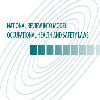Friday 13 February 2009
The Federal review of OH&S law has released its second report containing findings and recommendations on the optimal content of a model OHS Act in the following areas:
• scope and coverage, including definitions;
• workplace-based consultation, participation and representation provisions, including the appointment, powers and functions of health and safety representatives and/or committees;
• enforcement and compliance, including the role and powers of OHS inspectors, and the
application of enforcement tools including codes of practice;
• regulation making powers and administrative processes, including mechanisms for improving cross-jurisdictional co-operation and dispute resolution;
• permits and licensing arrangements for those engaged in high risk work and the use of certain plant and hazardous substances;
• the role of OHS regulatory agencies in providing education, advice and assistance to duty holders; and
• other matters the review panel has identified as being important to health and safety that should be addressed in a model OHS Act.
Together, the Review's two reports (the first of which was submitted on 31 October 2008) discuss and make recommendations for the optimal structure and content of a model OHS Act.
A brief summary of the key recommendations contained in both reports prepared for the WRMC is as follows:
• The model Act should apply to all work activities and industries, with separate, industry-specific legislation to be retained only where that can be objectively justified.
• The model Act should continue to extend appropriately to the public safety effects of work.
• The conduct of work and associated hazards and risks should more clearly determine the scope of OHS Acts, the duties of care and associated obligations and rights, and the definitions of key terms.
• The employment relationship should no longer be the determinant of duties of care, the duties being more broadly cast so that they also cover ‘employment like’ relationships.
• Positive duties of care would be placed on all participants in work and those who contribute to what is required for work to be undertaken, including:
o persons conducting a business or undertaking (qualified by what is reasonably practicable)
o officers (to exercise due diligence, as defined, to ensure corporate compliance)
o workers and others at the workplace (to take reasonable care), and
o those involved in the design, manufacture, supply etc of plant or substances and those who are engaged to provide OHS services.
• The importance of participation in OHS of all who are involved in the undertaking of work would be recognised by extended rights and obligations relating to consultation, participation and representation.
• The rights of health & safety representatives (HSRs) and others involved in OHS at the workplace should be clear and should be protected by stronger provisions against discrimination, victimisation and coercion (including providing for civil rights of action and a criminal offence).
• Issue resolution requirements should be simplified, with recourse to be available to inspectors or tribunals or courts.
• The rights of authorised union representatives to enter a workplace should be clarified and available for consultation, the giving of advice to workers and the investigation of a suggested breach.
• The role of the regulator and its inspectors in giving advice and guidance to duty holders should be given greater prominence.
• Regulator powers, particularly for securing ongoing health and safety and compliance, should be strengthened, but subject to clear requirements, protections and legal privileges for those compelled to give information.
• Cross-jurisdictional cooperation and exchange of information between regulators should be authorised by the model Act.
• The principle of graduated enforcement should be recognised in the model Act, with various tools available to the regulator, including enforceable undertakings as an alternative to prosecution.
• Only designated public officials should be able to bring prosecutions for offences under the model Act.
• The burden of proving all elements of an offence should be on the prosecution (except for proof of reason for discriminatory conduct, which should be on the defendant).
• There should be significantly increased penalties and a wide range of sentencing options available to a court to ensure sentences are imposed that are most appropriate to the offence and promote future compliance.
• There should be three levels of offences, determined by the level of culpability of the offender and the level of risk (not outcome).
• Appeals would ultimately lie in every jurisdiction to the High Court of Australia.
• Codes of practice should be considered part of the means of assisting duty holders to comply with the model Act and regulations but should not have special evidentiary status (not providing for deemed compliance if followed, or automatic guilt if not followed).
• The model Act should make provision for maintaining harmonisation and ensuring currency and optimal operation by being reviewed every five years.
The process moving forward to a model OHS Act
The two reports will be considered in detail by WRMC, with decisions made by them on the recommendations of the panel. The following timeline has been agreed for the development and introduction of model laws:
• May 2009 – Safe Work Australia to release an exposure draft of the model OHS Act for public comment (subject to delays in establishing Safe Work Australia).
• September 2009 – The model OHS Act is to be submitted to WRMC for decision.
• October 2009 onwards – Model OHS regulations to be developed and submitted to WRMC for decision.
• Late 2009 onwards – Codes of practice are to be developed and submitted to WRMC for decision.
• December 2011 – All jurisdictions will have implemented the model OHS Act and regulations.



